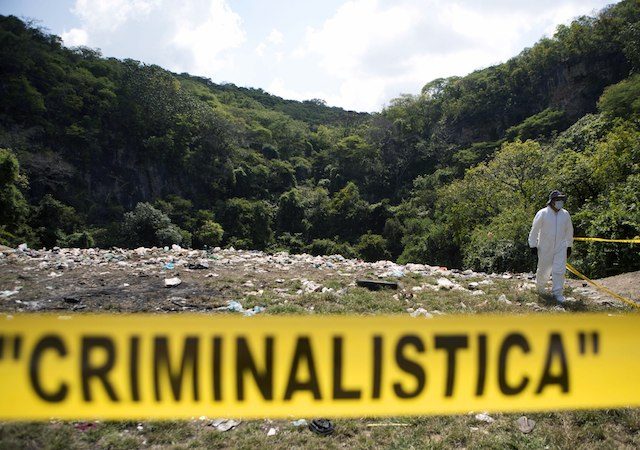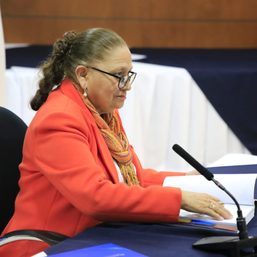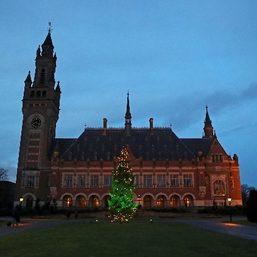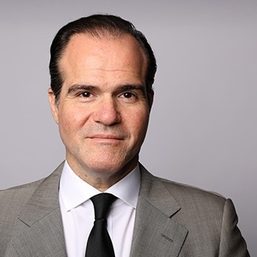SUMMARY
This is AI generated summarization, which may have errors. For context, always refer to the full article.

MEXICO CITY, Mexico – Almost two years after the disappearance of 43 students, the Mexican attorney general’s office is backing down from its conclusion that the young men were incinerated at a garbage dump.
With experts repeatedly casting doubt over the government’s “historic truth,” investigators are searching for the students elsewhere and looking into the possible collusion of other police officers in the disappearance.
“The attorney general’s office has an open investigation, which won’t rest until this is cleared up,” deputy attorney general for human rights Eber Betanzos told Agence France-Presse (AFP) in an interview.
Prosecutors have several lines of investigation but “none is conclusive,” Betanzos said on Wednesday, September 14.
The case is one of Mexico’s worst human rights tragedies, sparking international outrage and anger at home against President Enrique Pena Nieto’s administration.
Parents of the students joined thousands of protesters in Mexico City on Thursday, September 15, the eve of Independence Day, under the rallying cry “resign now,” although the demonstration was also directed at Pena Nieto’s handling of drug violence, corruption and the economy.
The students vanished on September 26, 2014, after corrupt police in Iguala, southern Guerrero state, abducted the young men after they hijacked buses for a protest in Mexico City, a common practice in their radical teacher training school.
The officers then handed them over to the Guerreros Unidos drug cartel.
But what comes next is a source of heated debate.
‘Historic lie’
Presenting the “historic truth,” former attorney general Jesus Murillo Karam declared in January 2015 that the cartel killed the students, incinerated their bodies in a funeral pyre at a garbage dump and tossed the remains in a river.
International human rights group said the conclusions relied too much on confessions from gang suspects.
The remains of only one student were identified after a bone fragment was found in the river.
Independent experts from the Inter-American Commission on Human Rights (IACHR) hired an international fire expert, who determined that it was scientifically impossible for the students to have been burnt at the dump. A second report by the group suggested that suspects were tortured.
The government has gradually rowed back.
In September 2015, then director of criminal investigation Tomas Zeron said a “large group” was burned at the dump but that he could not “confirm that it was all 43.”
The attorney general’s office later assembled a team of international fire experts, whose report also cast doubt over the government’s original conclusions.
The report, Betanzos said, found that “there could have been a controlled fire” at the landfill but “without having an indication linking this fire event to any fate of the students, whom we are looking for.”
The “historic truth,” he said, is a “hypothesis that must first be taken as a clue, within a line of investigation that doesn’t exclude any other possibility for the fate of the students.”
Zeron, whose handling of the investigation was slammed by the commission experts, resigned from his job at the attorney general’s office on Wednesday.
But Pena Nieto named him as a member of the National Security Council, angering the parents of the students, with one mother saying Zeron was rewarded for creating the “historic lie.”
‘Everything is possible’
Betanzos told AFP that authorities have conducted searches for the students in 845 locations. Some bodies were found in clandestine graves, but none belonged to the students, he said.
Investigators even searched a deep vertical cave in Guerrero state known as the Melendez Well, which, according to local legend, has been used to hide bodies since the 1910 Mexican revolution.
The attorney general’s office has acquired laser scanning technology known as Lidar, which takes thermal images of the earth to look for human remains.
The instrument will be used at sites that have already been visited and “new locations,” Betanzos said.
A federal government official, who requested anonymity, said authorities will begin in October to look at around 100 locations, some in the towns of Huitzuco and Apipilulco.
Betanzos said the new investigations have turned their attention to the municipal police in Huitzuco, whose conduct was questioned by the National Human Rights Commission, and other nearby towns.
While experts have urged the government to investigate a potential role of the federal police or the army, Betanzos said that for now nothing “points toward a responsibility of federal forces in these incidents.”
Asked whether there was any hope of finding the students, Betanzos said: “Everything is possible.” – Rappler.com
Add a comment
How does this make you feel?


![[WATCH] Try This: Empanada Salteña from Argentina](https://www.rappler.com/tachyon/2023/04/try-this-empanada-saltena-argentina.jpg?resize=257%2C257&crop=765px%2C0px%2C1037px%2C1037px)


There are no comments yet. Add your comment to start the conversation.